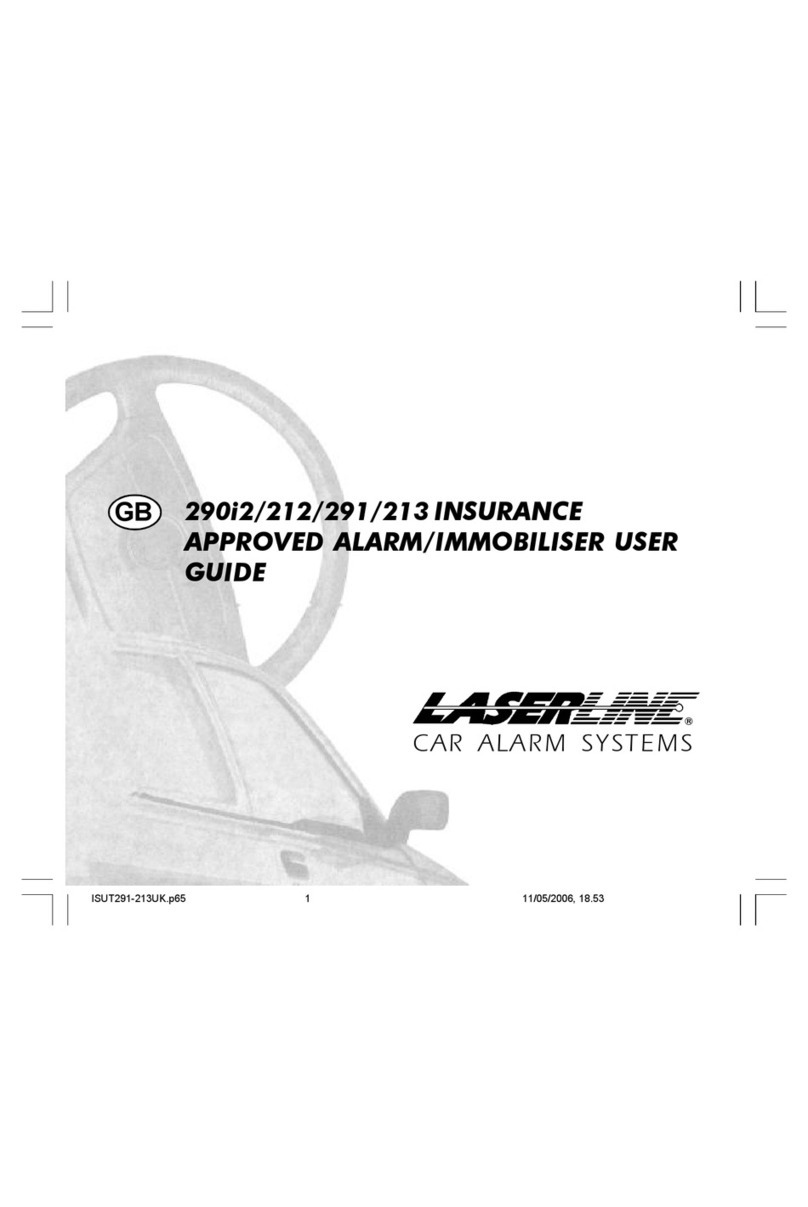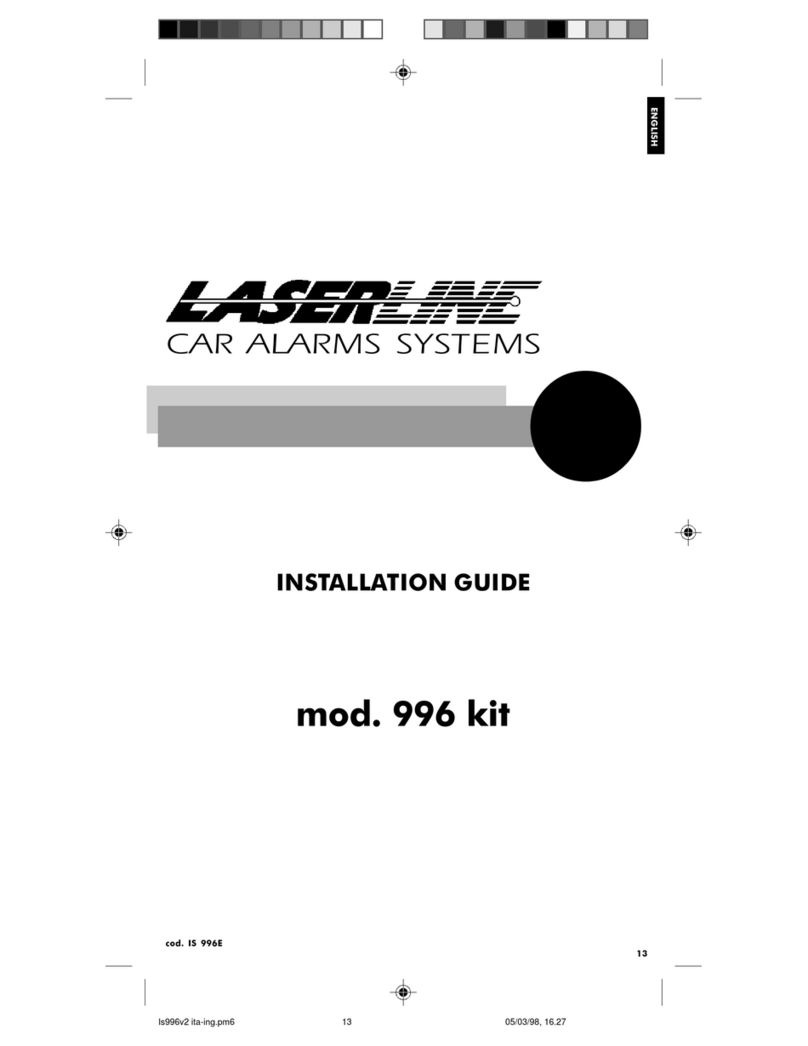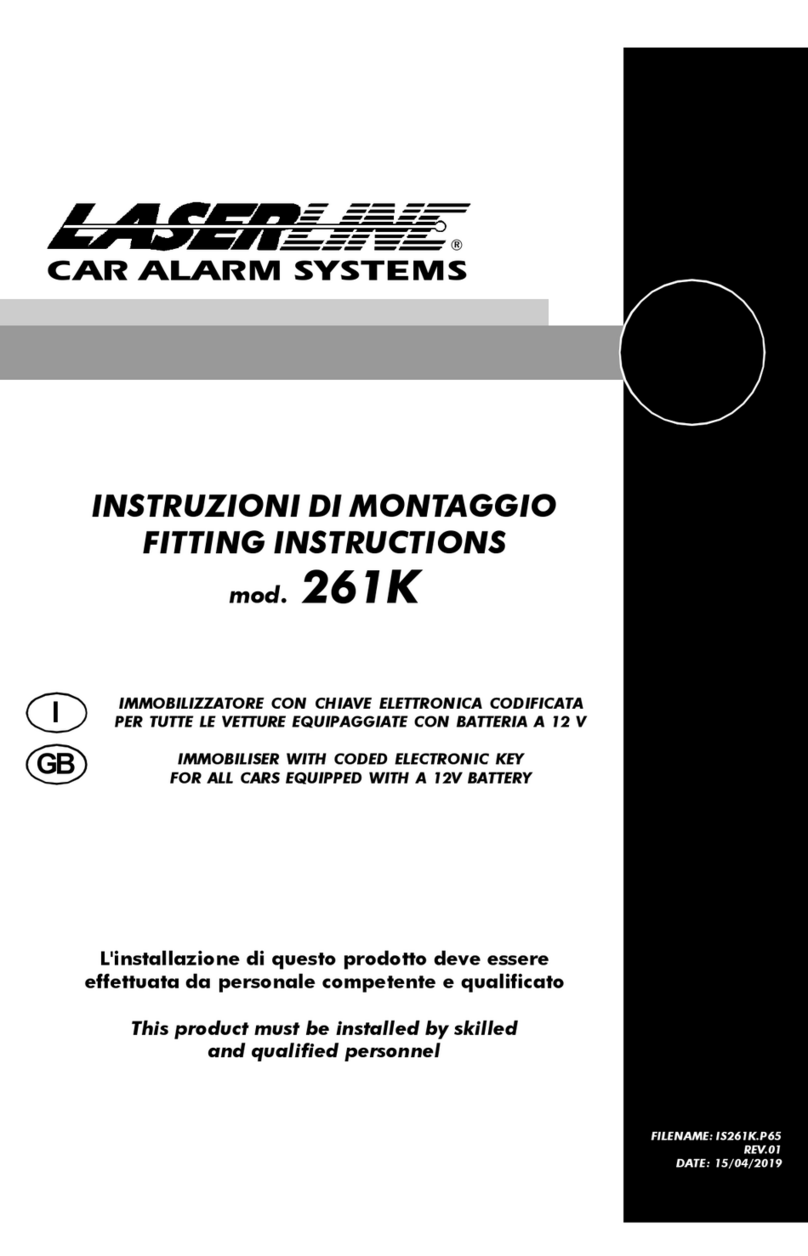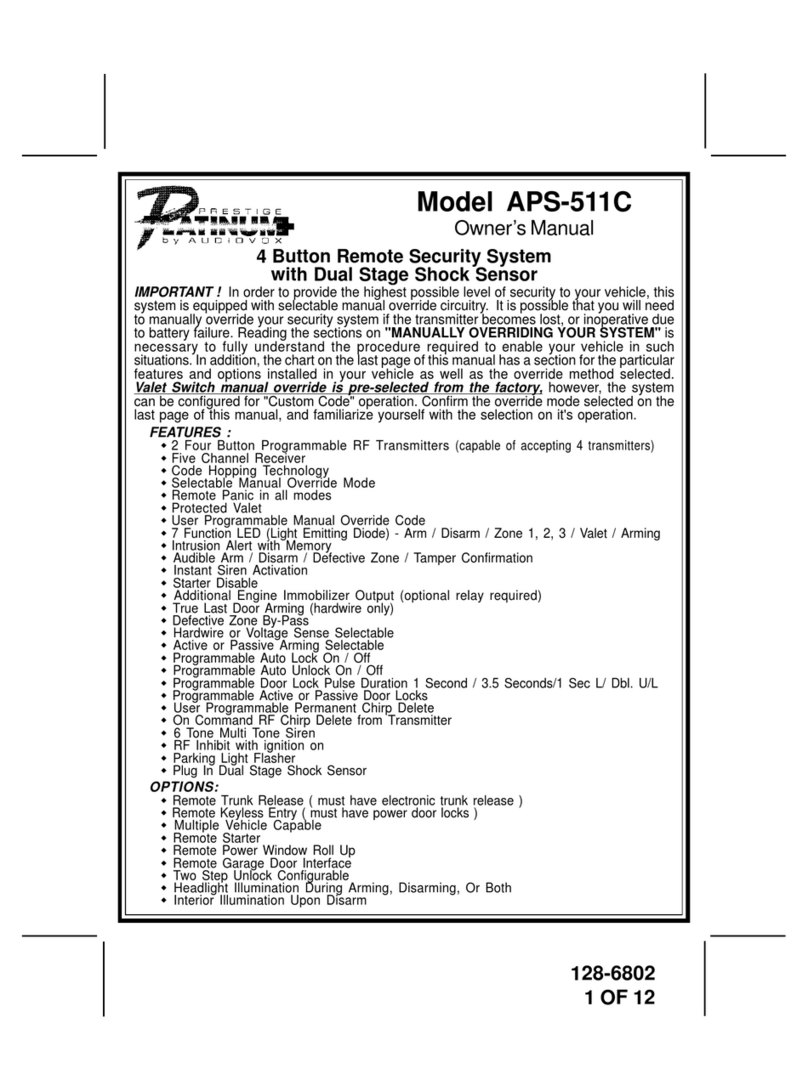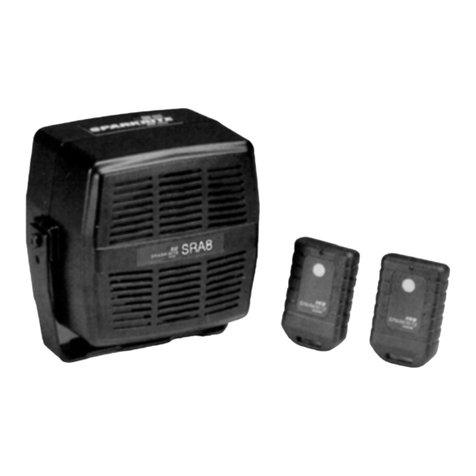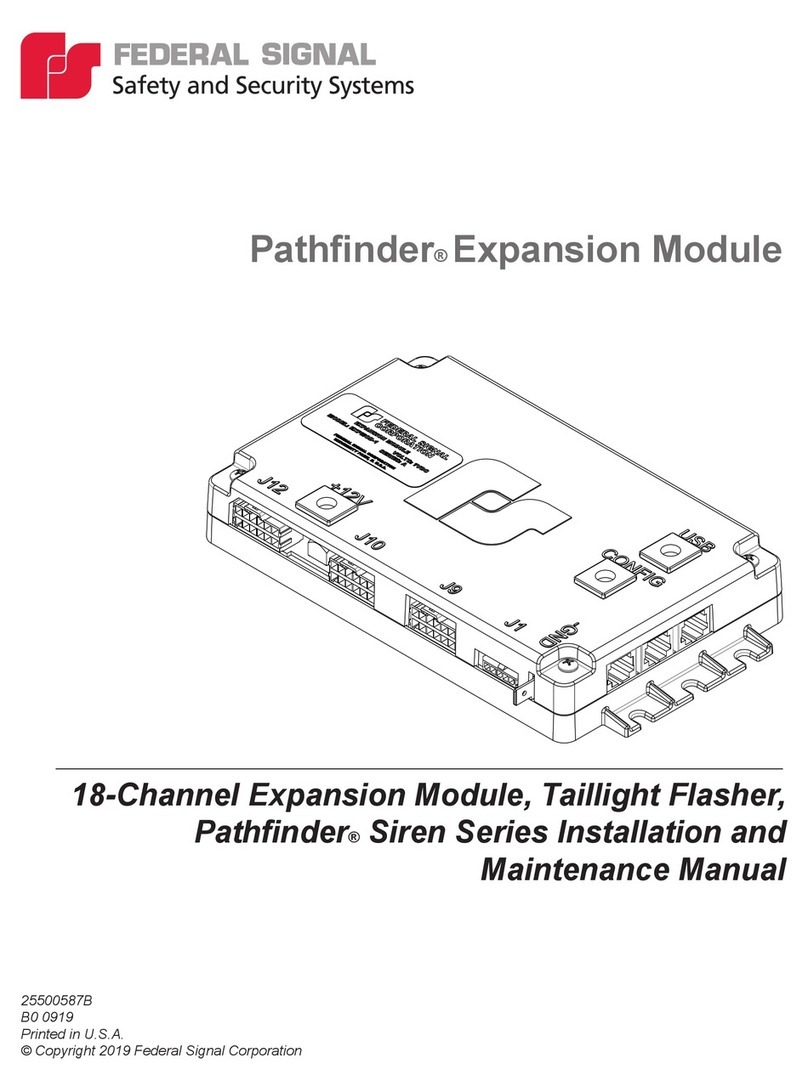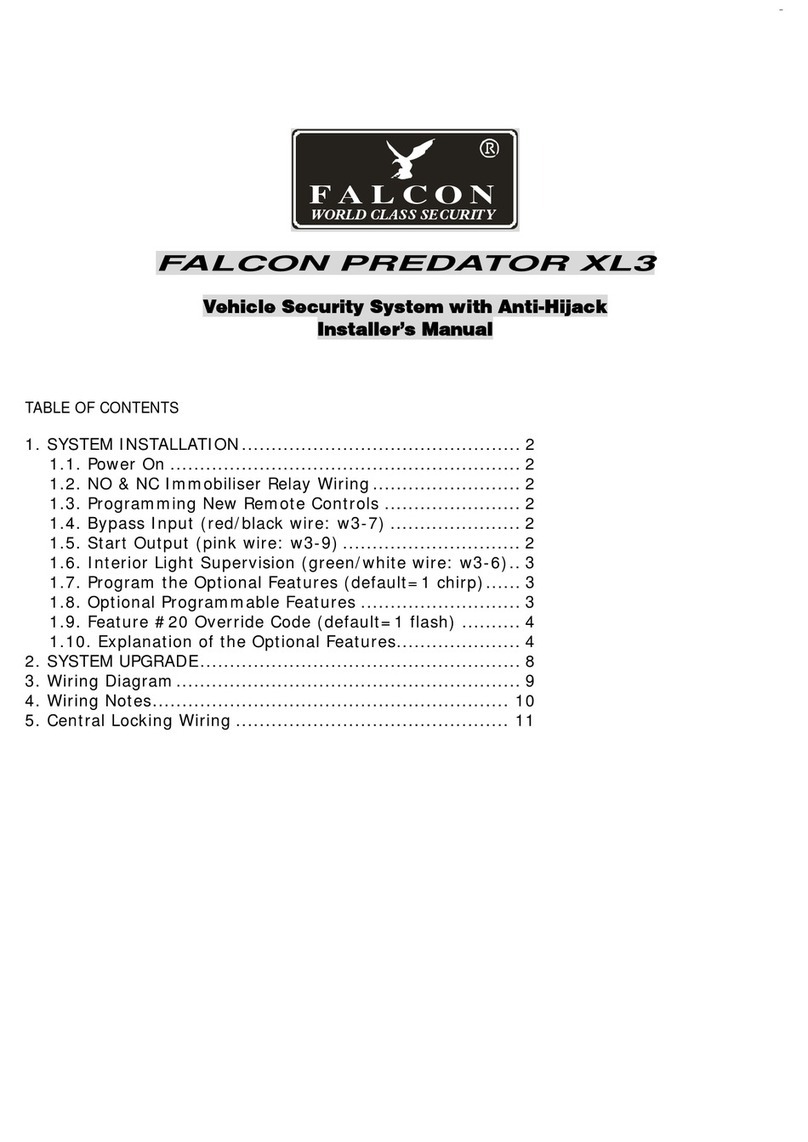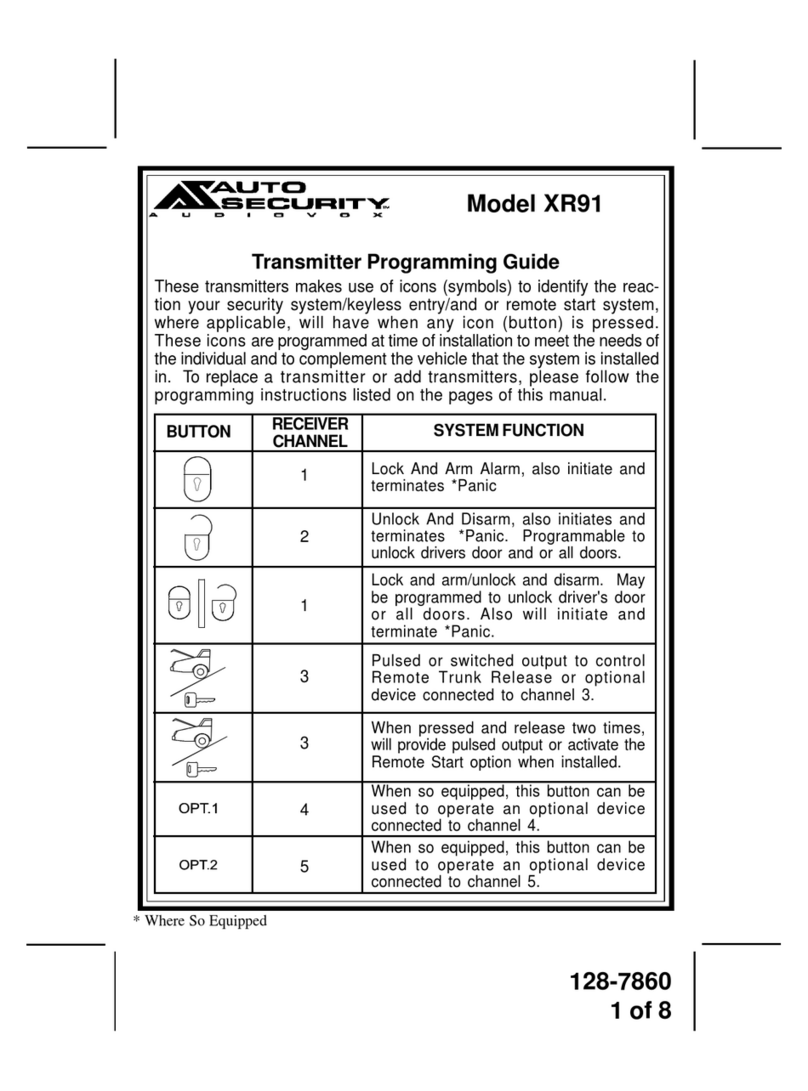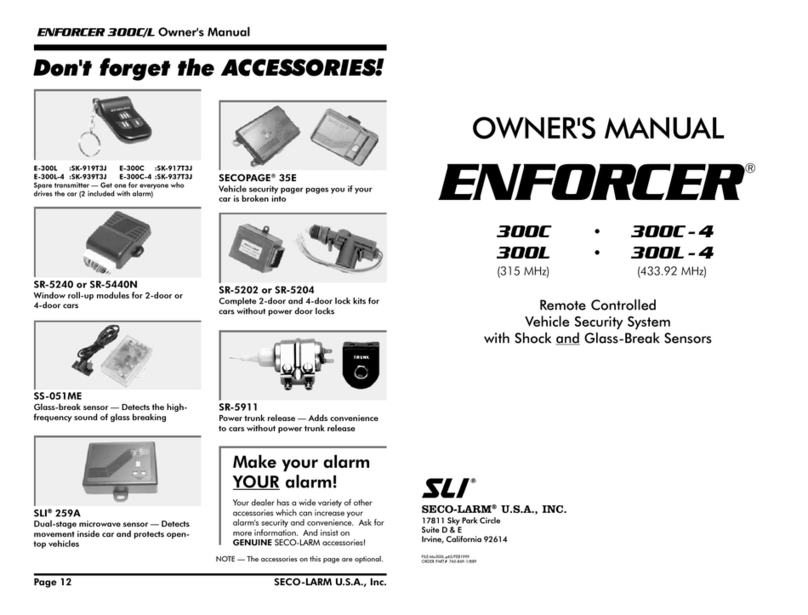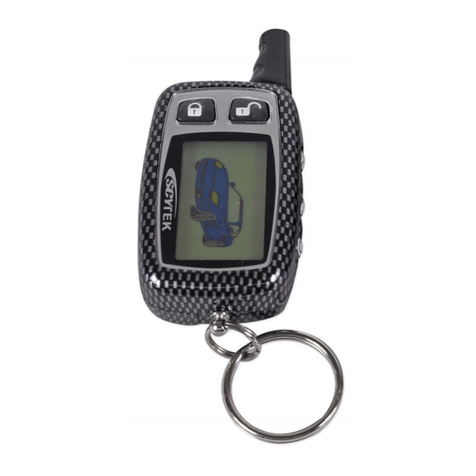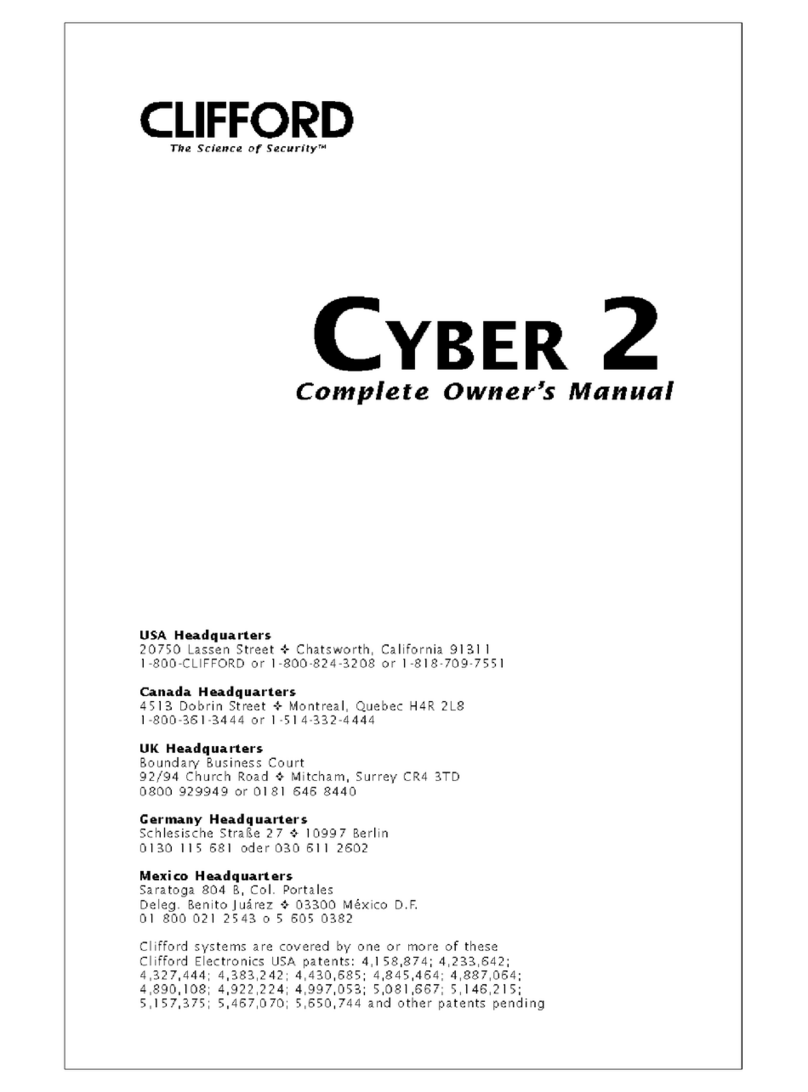
8
INCLINATION SENSOR SENSITIVITY PROGRAMMING
The inclination sensor has two sensitivity settings, which are programmable by the remote control.
To change between Low and High settings (factory setting is high) proceed as follows:
1) Turn the ignition key ON.
2) Within 10 seconds press button Con first remote control and then press button C on
the second remote control.
The alarm will respond with:
3 brief (½ second)acoustic tones and 3 brief flashes of the indicator lights = sensitivity set on Low
Repeat the procedure (points 1 and 2) to reset to High sensitivity, the alarm will respond with:
3 long (1 second) acoustic tones and 3 long flashes of the indicator lights = sensitivity set on High
Note: If motorcycle is parked on a busy main road and false alarms occur, disarm alarm
and verify which sensor triggered an alarm condition by checking the flash code from the
LED. If it indicates the inclination sensor, re-program sensitivity setting to Low.
ARM/DISARM ACOUSTIC TONES PROGRAMMING
To exclude the acoustic arming/disarming tones (factory set to include), proceed as follows:
1) Turn the ignition key ON.
2) Within 10 seconds press button Bon first remote control and then press button B on the
second remote control.
The alarm will respond with:
2 brief (½second) acoustic tones and 2 brief flashes of the indicator lights = tones disabled
Repeat the procedure (points 1 and 2) to include the acoustic tone, the alarm will respond with:
2 long (1 second) acoustic tones and 2 long flashes of the indicator lights = tones enabled
SECRET REMOTE CODE PROGRAMMING
This function allows you to memorise your own secret disarm sequence , utilising a combination of the
3buttonsontheremotecontrol.Beforeyouprogramyoursecretremotecodesequenceensurethatyou
have your “Emergency Pin Code” (see HOW TO KNOW YOUR EMERGENCY PIN CODE) noted in
therearoftheseinstructions.Studytheexamplestohelpyoudecideonthetypeofcodedsequenceyou
wouldliketouse. Button Bcannotbeusedforyour first button in yourcodedsequence,thisis to avoid
conflicts with the panic activation and inclination sensor/siren exclusion. Use the table or the table in
the rear of these instruction to note your coded sequence.
PROGRAMMABLE FUNCTIONS

